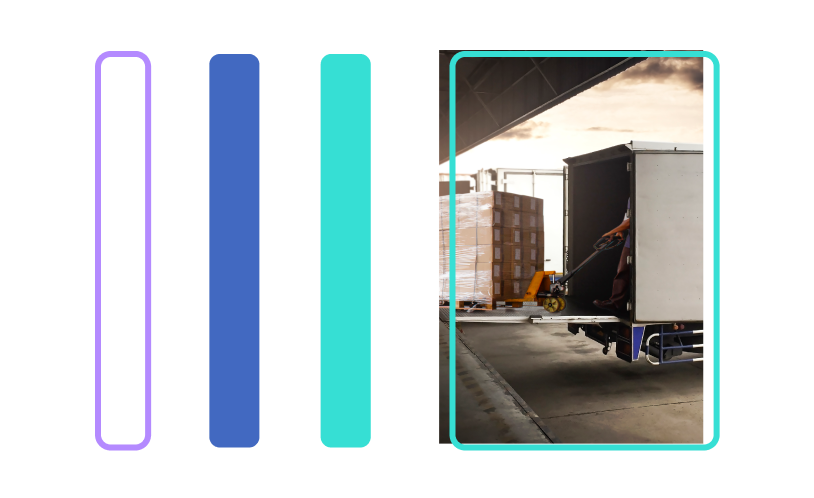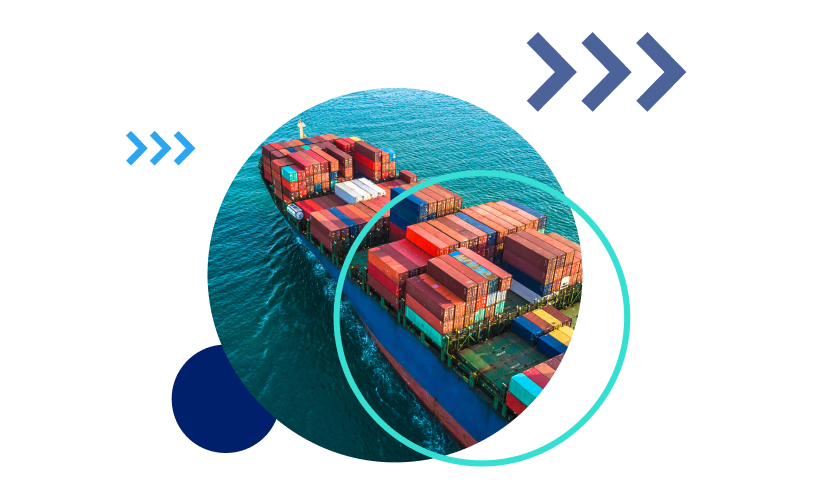If you ship freight, the last thing you want to deal with is theft, loss, or damage to your valuable cargo. Yet these situations occur more frequently than most importers expect, and without proper protection, they can significantly impact your operations and bottom line.
That’s where freight insurance comes in.
We spoke with XCover, a global insurance provider and Freightos Marketplace partner, to get answers to crucial questions about SMB freight insurance. XCover specializes in integrating into customers’ online journeys – which makes it great for e-commerce businesses and international shippers.
Read on to learn everything you need to know about safeguarding your shipments throughout their international journey.
A Guide to Freight Insurance for Small Business Importers

What are the most common risks that SMB importers face in freight shipping? How can insurance mitigate these risks?
A lot can happen between when goods are picked up and when they arrive at their destination. Some of the most common risks include damage to the goods while they’re in transit, misplaced shipments, and theft. These issues can present significant cost to a small or midsized business, both financially and in terms of customer experience and loyalty, so it’s important to be prepared.
Freight insurance is there to cover businesses when these unexpected issues occur. If goods are damaged, lost, or stolen, the policyholder can file a claim and be reimbursed up to the sum insured, which includes both the value of the goods and associated shipping costs.
How is the cost of freight insurance calculated?
The price of freight insurance is typically calculated based on the value of the shipping transaction it’s attached to, with the insurance premium a percentage of the shipping cost. Depending on the value of the transaction, there may be a minimum insurance cost, or an admin fee.
For example, if a business is paying $11,000 to ship their cargo, at a 0.230% premium with an admin fee of $31, they would pay $56.30 for the insurance and get $11,000 in coverage.
What does freight insurance not cover?
All insurance comes with restrictions, so it’s important to take a look at the policy terms before buying. A common term that SMBs sometimes miss is that certain items are excluded from coverage. If you ship fragile, rare, or perishable goods, check that your goods are actually covered by the insurance you purchase.
Freight insurance typically has submission windows as well, which means submitting sooner than later is smart. It may seem logical to wait and see if a shipment is lost before submitting a claim, but we’d recommend submitting as soon as concern arises in order to avoid missing the window. Submission windows are outlined in the policy, so you check it when you purchase so you’ll know how much time you have.
Finally, insurers need to verify the circumstances of a claim, so any claims without documented evidence won’t be covered. Businesses should keep copies of all the documentation they receive throughout the shipping process and take pictures of the items when they ship—you never know when you may need to make a claim!
How can an SMB importer assess the value of their goods for insurance purposes?
When a customer purchases goods, businesses usually have a transaction invoice listing customer details, items, and purchase prices. Insurance providers use this document to verify the value of the goods, so all you need to do is use the values listed on your invoices if you’re asked during the claims process and provide this document for verification.

What steps should SMB importers take immediately after loss or damage to ensure a smooth claims process?
There’s a lot a business can do to improve their chances of having their freight claim approved. First, always keep documentation throughout the shipping process. Claim assessors may need to see documents like a bill of lading, packing list, or commercial invoice. Having these documents accessible will speed the claims process.
As soon as you discover that your items are damaged, or think your shipment might be lost, report it to the carrier. Keep documentation of all your conversations with them, as you might need this during the claims process. Then, make your claim. Don’t wait for the carrier to finish investigating—you’ll be able to add more information to your claim later if you need to. You don’t want to miss the submission windows in your policy, or your claim won’t be covered.
When you start a claim, you’ll be asked about the incident, and the damage or loss you’ve had. Provide as many details as possible to help the claim assessor understand what happened, what you’ve done to investigate so far, and what you’re claiming for. Including all the documents requested during the claims process will speed up your assessment.
At the end of the day, a claims assessor is trying to understand what happened, what you’re claiming for, and whether it’s covered according to your policy terms, so anything that you can provide to support your claim will increase your chances of a successful claim.
What common mistakes do SMBs make when purchasing freight insurance?
No one likes to read the terms and conditions, but this is one place where SMBs can run into problems when purchasing freight insurance. Freight insurance usually comes with a list of items that aren’t covered (e.g. precious metals, tobacco, currency), so if you sell one of these item types, you could accidentally end up buying a policy that doesn’t cover you.
Carefully reviewing the coverage terms (also known as policy wording) before you purchase will also make sure you’re aware of other exclusions that could complicate the claims process, like insufficient packing, claims without evidence, and submission windows. With enough knowledge, you’ll be able to know if the policy is right for you, and how to get the most out of it.
What are the most important things to look for in a freight insurance provider?
Different insurance providers offer different limits of coverage and different types of coverage with different exclusions. It’s important to look at the policy carefully to make sure it meets your needs.
You’ll also want to take a look at the platform itself. Hopefully, you won’t need to make a claim, but if you do, you’ll want to make sure that you have a provider who prioritizes easy-to-use systems and positive customer experience. While the traditional claims process can get bulky and hard to understand, some newer providers like XCover use modern tools to improve the process, making it easy to enter your information, upload documents, and submit a claim.
Can you share an insurance success story – where insurance prevented a big loss?
One of our customers sells paintings through her website and had an issue shipping an oil painting from the US to a customer in France. The painting was damaged in transit, and the entire $6,400 value plus shipping costs would have been lost if she hadn’t purchased insurance. But she made a claim on XCover and was able to get reimbursement for the $6,400 value of the painting plus an additional $935 in transportation fees.
What’s one story of the opposite – where not having insurance caused a big preventable loss?
We only hear from the customers who buy insurance, but this can happen anytime you ship something valuable and something unexpected happens during the process. It could be damage, like in our artist customer’s case, but it could also be someone stealing the cargo, or having it lost in transit. Without insurance, a business loses the whole value of the items they shipped and any money they paid to ship it. This can put a big strain on a small or medium-sized business, especially when they need to offer the customer a refund or compensate them for not receiving something valuable.
Search, book, and manage freight.
And add insurance, easily, right on the platform.



